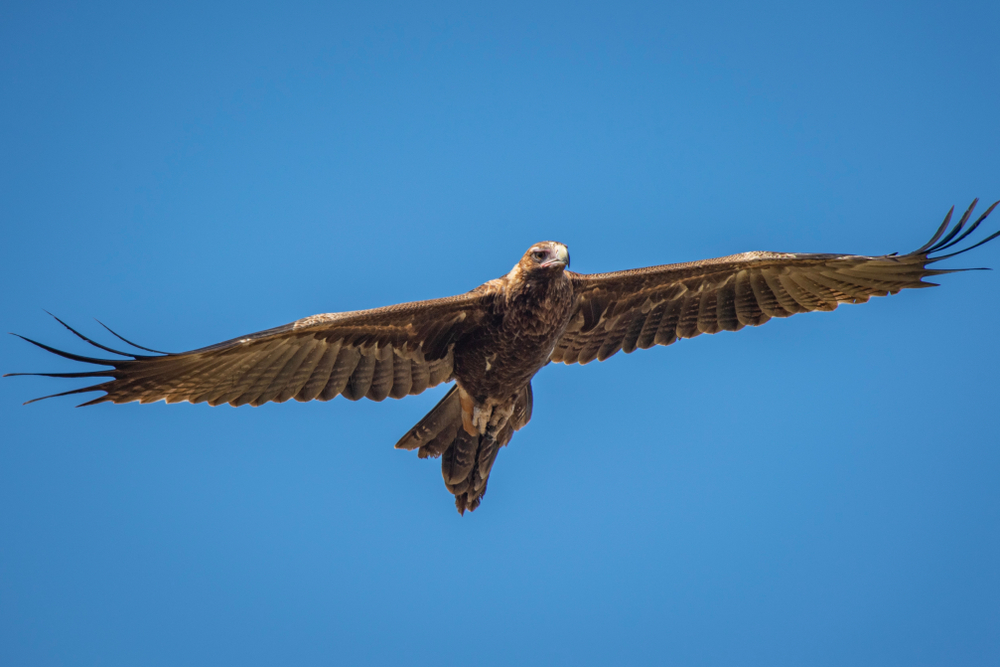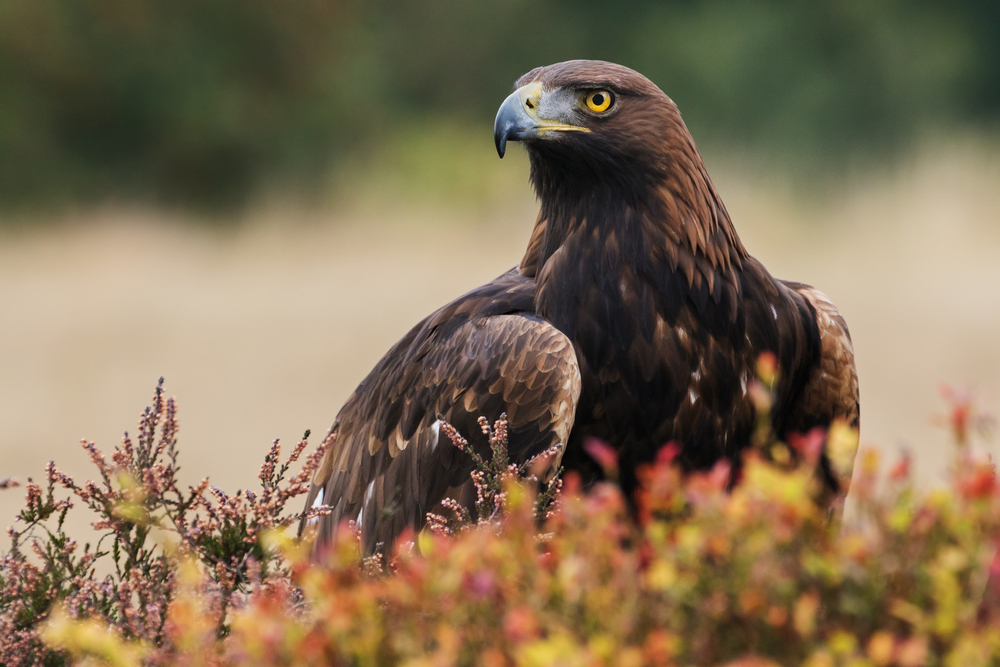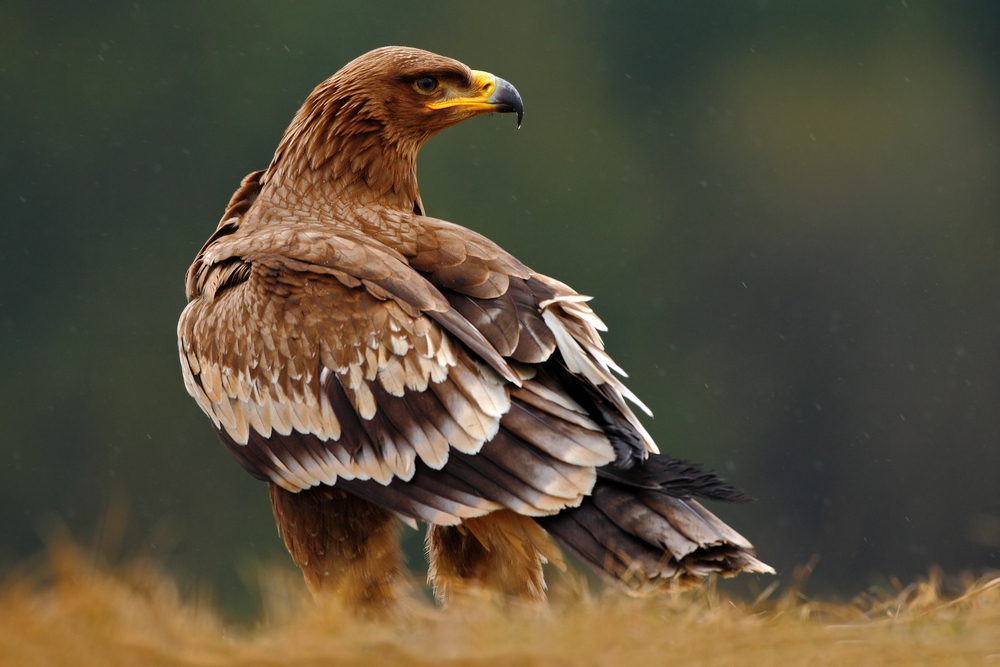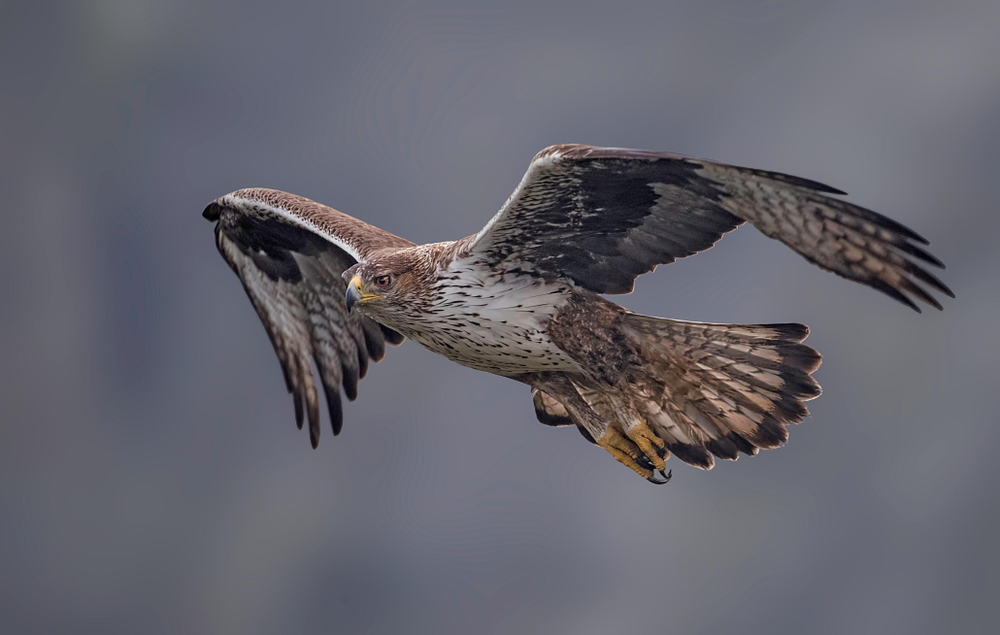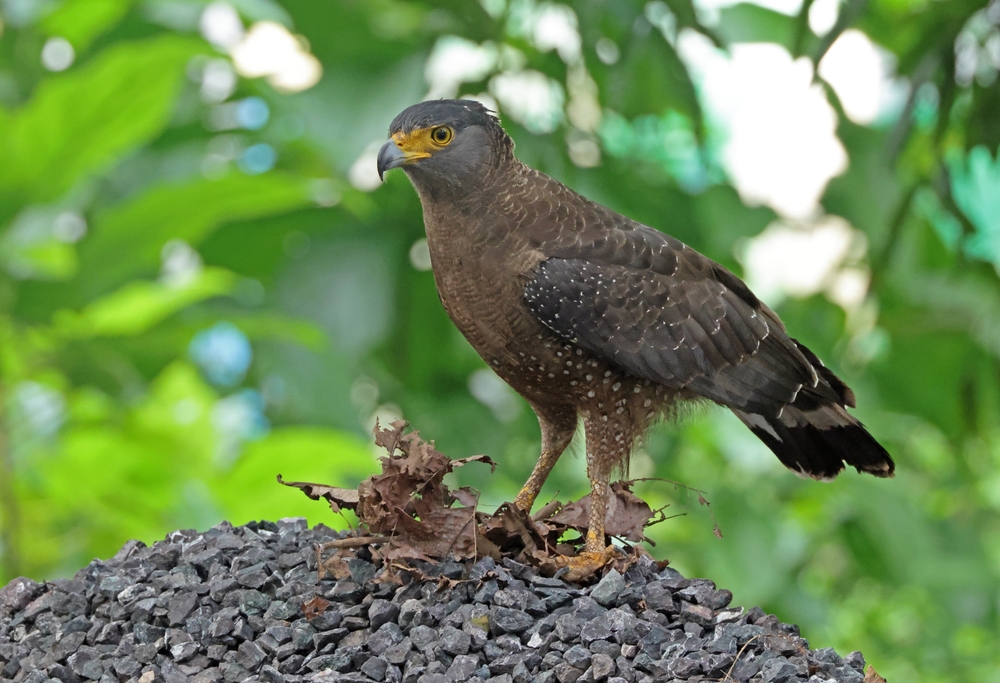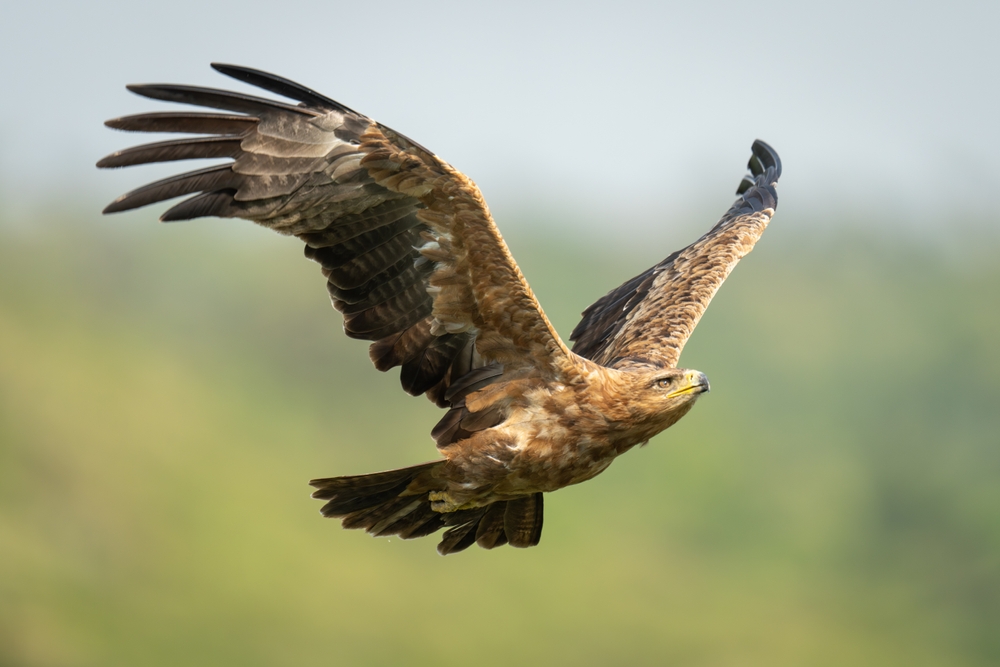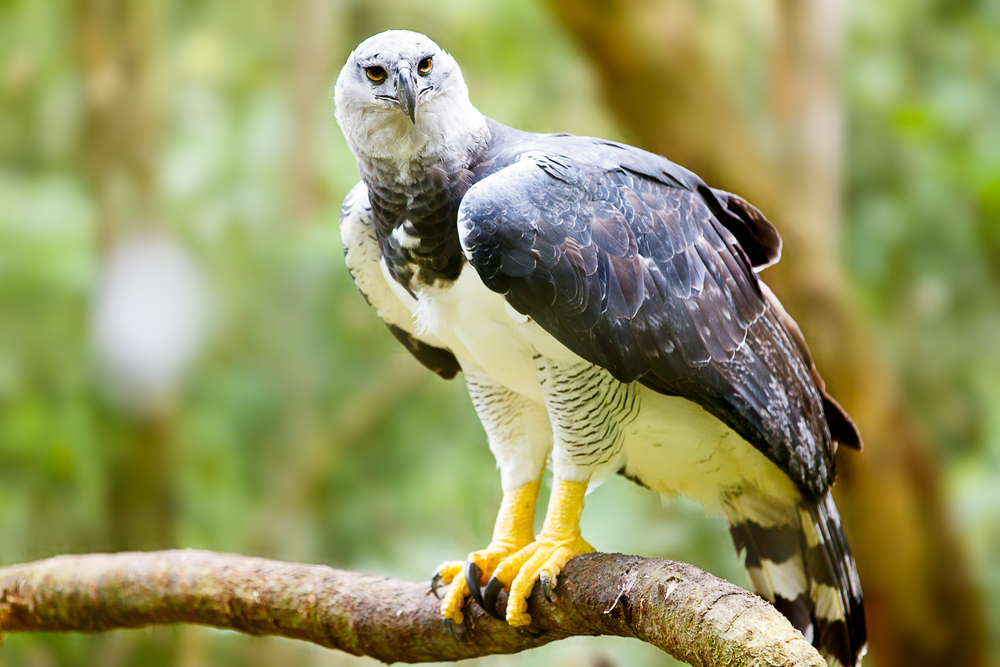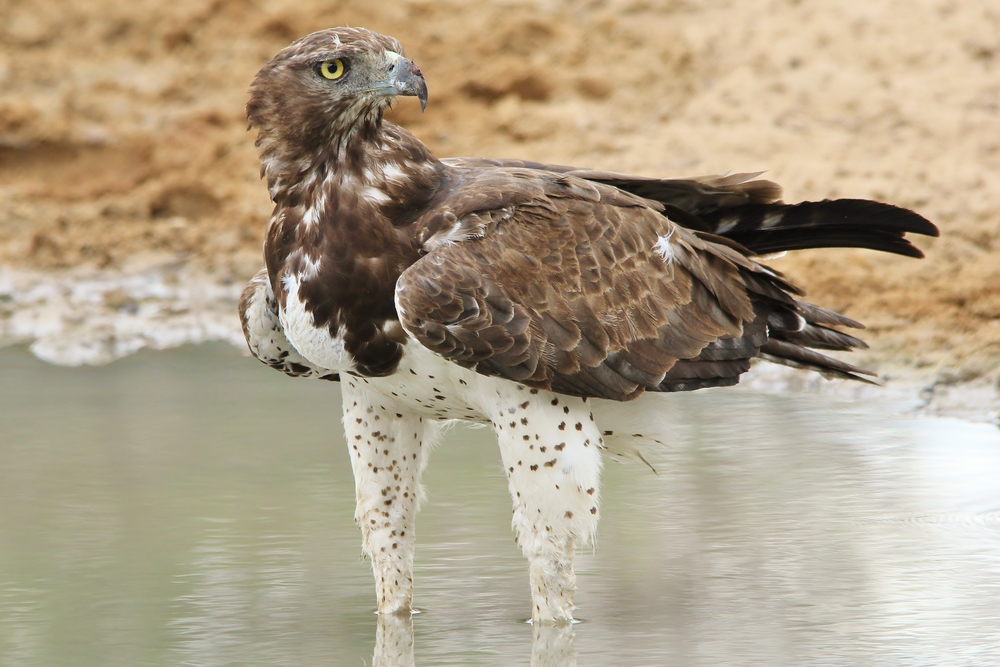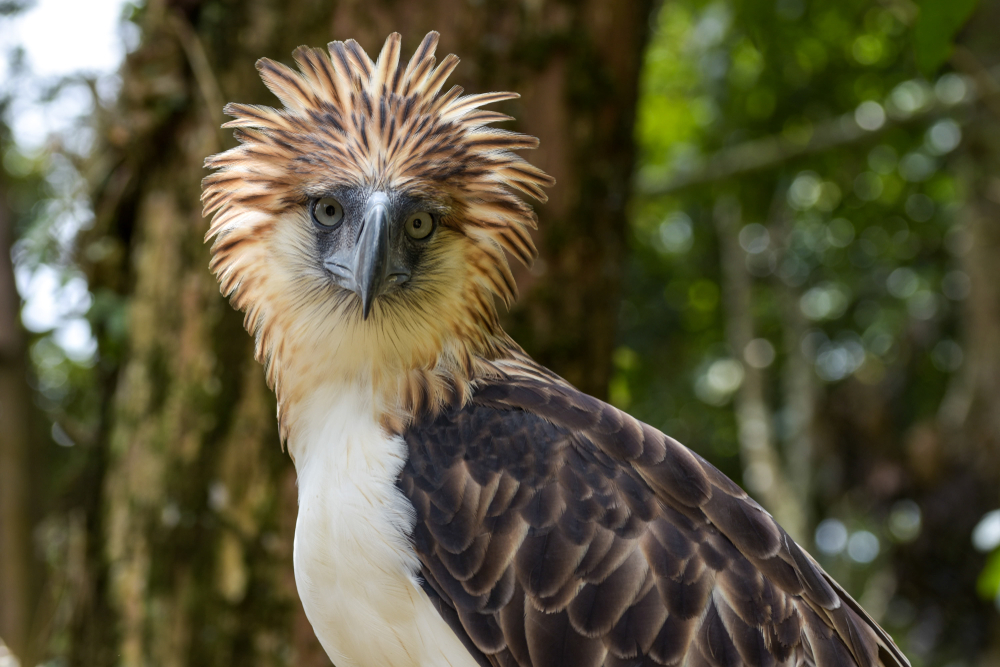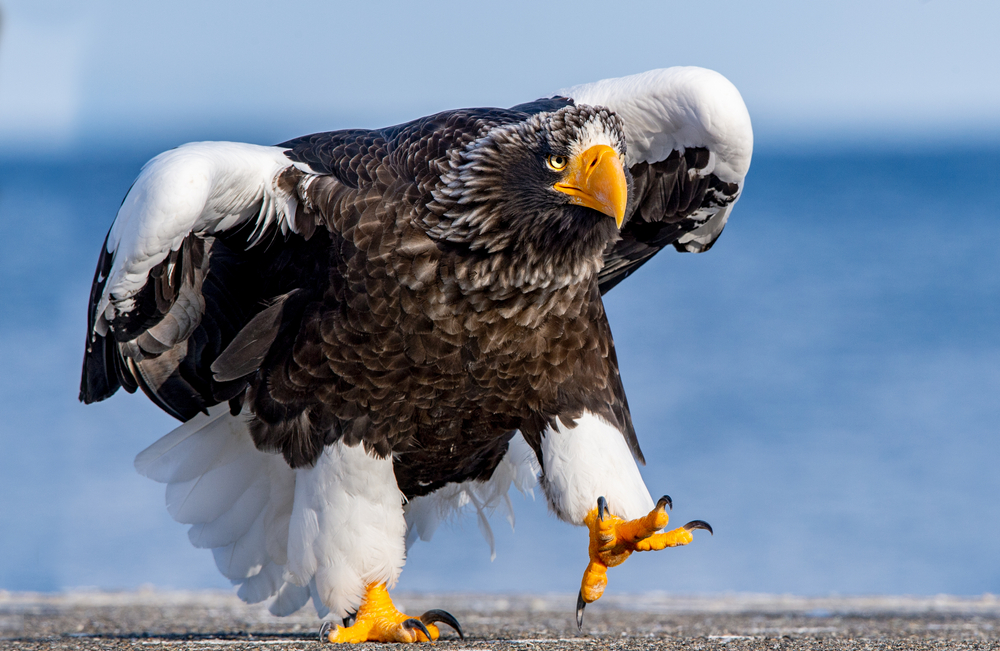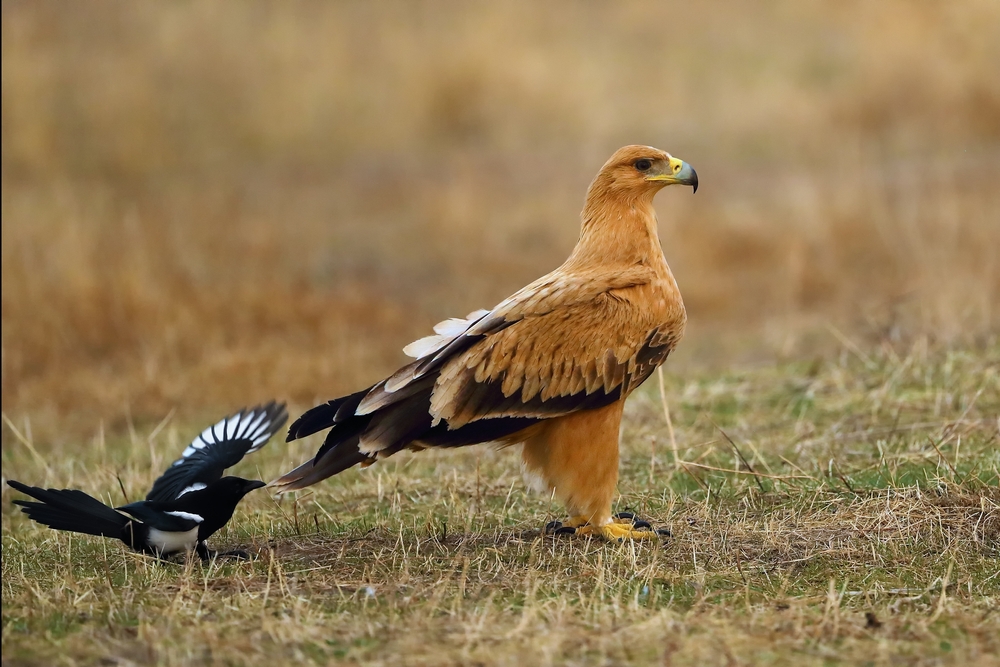The Wedge-tailed Eagle belongs to the genus Aquila, making it closely related to other large booted eagles such as the Golden Eagle (Aquila chrysaetos) and the Steppe Eagle (Aquila nipalensis). Among them, it shares the most similarities in size and behavior with the Golden Eagle.
About
The Wedge-tailed Eagle is Australia’s largest bird of prey and one of the most iconic raptors of the continent. Known for its vast wingspan, distinctive wedge-shaped tail, and soaring mastery, this eagle dominates skies over open plains, forests, and deserts. It is highly adaptable and found across mainland Australia, Tasmania, and southern New Guinea. Revered in Indigenous Australian cultures and often regarded as a symbol of strength, the Wedge-tailed Eagle has become a national emblem of Australia’s wilderness.
Adults measure 85–105 cm (33–41 in) in length, with a wingspan ranging from 185–285 cm (6.1–9.4 ft)—the largest wingspan of any eagle on Earth. Females, significantly larger than males, can weigh up to 5.3 kg (12 lbs). Plumage is dark brown to black, with mottling in juveniles that darkens with age. Its wedge-shaped tail, long legs, and broad wings allow it to soar effortlessly for hours, often reaching great altitudes.
Wedge-tailed Eagles are opportunistic predators and scavengers. They hunt mammals such as rabbits, wallabies, and kangaroos, along with birds and reptiles, while also feeding on carrion. Their role as scavengers makes them ecologically important, though historically they were persecuted by farmers who mistakenly believed they posed significant threats to livestock. Today, they are protected by law.
Breeding pairs construct massive stick nests in tall trees or cliffs, often reusing and adding to them for decades. The female usually lays one or two eggs, and incubation lasts around 45 days. Often, only one chick survives due to sibling rivalry. Young fledge after 10–12 weeks but may remain dependent for several months. In the wild, they can live 20–25 years.
The scientific name of the Wedge-tailed Eagle is Aquila audax, and it belongs to the family Accipitridae, which includes eagles, hawks, and kites. With its immense size, soaring flight, and iconic tail shape, the Wedge-tailed Eagle is a defining symbol of Australia’s skies and landscapes.
Physical Characteristics
The Wedge-tailed Eagle (Aquila audax), Australia’s largest bird of prey, is easily recognized by its enormous size, long wings, and distinctive wedge-shaped tail.
Plumage:
Adults are mostly dark brown to blackish-brown, with lighter golden-brown feathers on the nape and shoulders, giving them a regal sheen. Juveniles are generally paler, with sandy to reddish-brown plumage that darkens with age.
Head and Face:
The head is relatively small compared to the body, with a powerful gray to black hooked beak. The eyes are deep brown to amber, framed by lighter feathers around the crown and neck.
Body and Wings:
They are heavily built with very long, broad wings that allow effortless soaring. The most distinctive feature is the long, wedge-shaped tail, unique among eagles, which gives them their name and aids in maneuverability during flight.
Size:
-
Length (Body): 33 to 42 in (85 to 105 cm)
-
Wingspan: 86 to 112 in (2.2 to 2.85 m), the largest wingspan of any eagle in the world.
-
Tail Length: 15 to 19 in (38 to 48 cm)
Weight:
-
Males: 7.7 to 9.9 lbs (3.5 to 4.5 kg)
-
Females: 9.9 to 12.8 lbs (4.5 to 5.8 kg), making females noticeably larger.
Bill and Talons:
The strong hooked beak and long talons are built for tearing through flesh and carrion.
The Wedge-tailed Eagle’s immense size, unique wedge-shaped tail, and soaring flight make it one of the most iconic and unmistakable raptors of Australia and New Guinea.
Reproduction
The Wedge-tailed Eagle follows a slow breeding cycle, typical of large raptors, with strong pair bonds and large, long-lasting nests.
1. Mating and Courtship:
These eagles are monogamous, often pairing for life. Courtship involves spectacular aerial displays, including circling, dives, and talon-grappling in flight.
2. Nesting:
Nests are enormous structures of sticks, often lined with green leaves, built in tall trees or occasionally on cliffs. They may reach 8 to 10 feet (2.5 to 3 m) across and be reused and expanded year after year, becoming massive over time.
3. Egg-Laying:
The female lays 1 to 3 eggs, usually in late winter to early spring (July–August in Australia). Clutches of 2 are most common.
4. Incubation:
Incubation lasts about 42 to 45 days, with the female performing most of the incubation while the male hunts and supplies food.
5. Raising Chicks:
Chicks hatch covered in white down and are intensively brooded by the female for the first few weeks. Both parents feed them, tearing food into smaller portions. Aggression between siblings is common, and usually only the strongest chick survives.
6. Fledging and Independence:
Young fledge at about 70 to 90 days of age. After leaving the nest, they may remain in the parents’ territory for several months before dispersing.
The Wedge-tailed Eagle’s reproductive cycle—large stick nests, small clutch sizes, and prolonged parental care—ensures strong survival chances for surviving chicks, but limits rapid population growth.
Lifespan
The Wedge-tailed Eagle is one of the longest-living raptors in the world, with individuals surviving for decades in stable conditions.
Lifespan in the Wild:
In natural conditions, Wedge-tailed Eagles typically live 20 to 25 years, though some may reach 30 years if they avoid persecution and accidents. Juvenile mortality is highest during the first year, as young eagles learn to hunt independently.
Lifespan in Captivity:
In zoos and rehabilitation programs, they may live up to 40 years, benefitting from consistent food, veterinary care, and protection from threats such as poisoning or shooting.
Threats to the Wedge-tailed Eagle:
-
Persecution: Historically hunted and poisoned by farmers who believed they threatened livestock, though today they are legally protected.
-
Habitat Loss: Clearing of native woodlands and grasslands reduces nesting and hunting areas.
-
Collisions: Vehicle strikes and collisions with power lines are significant threats.
-
Food Scarcity: Declines in rabbits (a major prey source) and other mammals can affect breeding success.
-
Poisoning: Ingesting poisoned carcasses intended for pest control remains a risk.
Care and Protection:
Conservation measures in Australia emphasize legal protection, education, habitat management, and mitigation of poisoning and collision risks.
The Wedge-tailed Eagle’s long lifespan, adaptability, and top-predator status make it both a resilient species and an enduring symbol of Australia’s wild landscapes.
Eating Habits
The Wedge-tailed Eagle is an opportunistic predator and scavenger, playing a key role as both hunter and cleaner in Australian ecosystems.
Diet:
Its diet is highly varied, including medium-sized mammals such as rabbits, wallabies, possums, and young kangaroos, as well as birds, reptiles, and carrion. Since the introduction of European rabbits, they have become a staple prey item.
Hunting Strategy:
Wedge-tailed Eagles are powerful soaring hunters, covering large areas while scanning for movement. They also hunt cooperatively in pairs or small groups, particularly when targeting larger prey such as kangaroos.
Killing Technique:
Small prey is seized and killed instantly with talons, while larger animals are subdued by repeated strikes and prolonged grappling. Carrion is consumed by tearing through flesh with their strong beak.
Feeding Behavior:
These eagles often feed alone or in pairs, but large numbers may gather at abundant food sources, especially roadkill or carcasses in open country. During breeding, the male provides prey to the female, who feeds the chicks.
Special Considerations:
-
Scavenging Role: As frequent scavengers, they help recycle nutrients and clean the environment of carcasses.
-
Cooperative Hunters: Their occasional group-hunting behavior is unusual among eagles.
-
Human Impact: They are often seen feeding on roadkill, which increases the risk of vehicle collisions.
The Wedge-tailed Eagle’s blend of powerful hunting skills, cooperative behavior, and scavenging adaptability makes it one of the most versatile and ecologically significant raptors in Australia.
Uniqueness
The Wedge-tailed Eagle is one of the most iconic raptors of the Southern Hemisphere, standing out for its size, behavior, and cultural significance.
Largest Wingspan of Any Eagle:
With a wingspan of up to 9.3 ft (2.85 m), the Wedge-tailed Eagle has the largest wingspan of all eagles, allowing it to soar effortlessly over vast distances.
Distinctive Tail Shape:
Its long, wedge-shaped tail is unique among eagles and gives it exceptional maneuverability, especially in soaring and circling flight.
Cooperative Hunting:
Unlike many solitary eagles, Wedge-tailed Eagles sometimes hunt cooperatively in pairs or groups, taking down prey as large as adult kangaroos, a behavior rare in the eagle world.
Adaptability:
They thrive in a wide range of habitats—from deserts to forests—and readily adjust to changes in prey availability, making them among the most adaptable of large raptors.
Cultural Importance:
The Wedge-tailed Eagle is a revered bird in Aboriginal culture, often seen as a spiritual messenger and a symbol of power. It is also Australia’s national bird of prey.
Conservation Symbol:
Once heavily persecuted as a livestock threat, it is now legally protected and has become a symbol of conservation success, recovering strongly in much of its range.
The Wedge-tailed Eagle’s immense wingspan, unique tail, cooperative behavior, and deep cultural ties make it one of the most extraordinary and celebrated raptors on Earth.
Be the First to Share Photos of This Species.
FAQ’s
1. What is the closest species to the Wedge-tailed Eagle?
2. How does the Wedge-tailed Eagle compare to other eagles?
The Wedge-tailed Eagle has the largest wingspan of any eagle (up to 9.3 ft / 2.85 m) and a distinctive wedge-shaped tail not found in other species. It is also one of the few eagles known to hunt cooperatively, sometimes in groups, and its adaptability to diverse habitats makes it more versatile than many of its Aquila relatives.
3. What national parks provide the best chance to see a Wedge-tailed Eagle?
The Wedge-tailed Eagle is widespread in Australia and parts of New Guinea. Some of the best places to see them include Kakadu National Park (Northern Territory), Grampians National Park (Victoria), Flinders Ranges National Park (South Australia), and Kosciuszko National Park (New South Wales).



































































